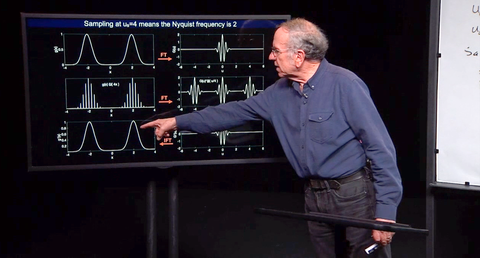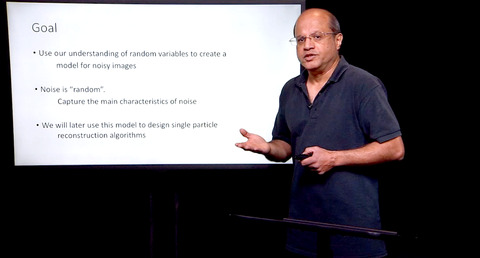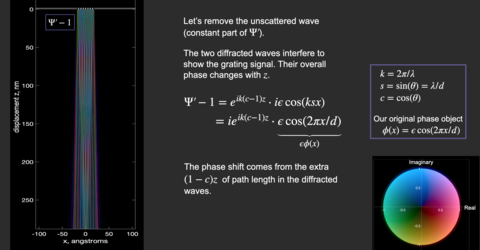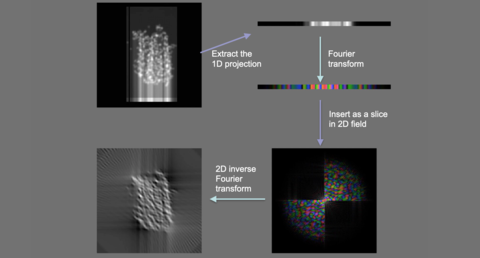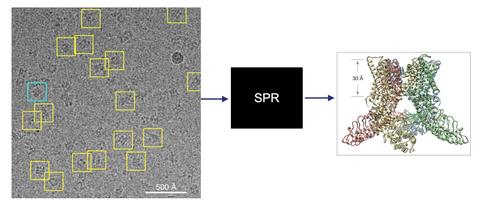Single-particle cryo-EM methods have rapidly become a leading approach for the study of the macromolecular machines of life. Instructional videos and other tools are presented on our sister sites to give background on specimen preparation, data acquisition, and the general procedures of structure determination using single-particle methods.
Central to the process of structure determination is the “black box” of computer processing of raw images to produce 3D density maps. We believe it important that users of cryo-EM techniques know the essential principles of operation of that black box, for two reasons.
1. It’s important to know what is happening in order to avoid wrong results.
2. It’s very useful to understand the theory so that better experiments can be planned.
The basic principles that we cover are these:
1. Phase-contrast imaging in the electron microscope, including the contrast-transfer function (CTF).
2. Fourier transforms(FTs) are essential in dealing with the CTF and are key in 3D reconstruction algorithms. They are used in very many steps of computer image processing. We provide a quick but comprehensive introduction to FTs.
3. Low signal-to-noise ratios present fundamental limits on the quality of cryo-EM results. We cover the basic principles of noise and random variables to help identify quantitatively what noise does and how its effects are best mitigated.
4. Estimation theoryis the field of mathematics underlying important methods such as maximum-likelihood estimation.
5. 3D reconstruction from 2D images is the central process in structure determination. Based on an understanding of CTFs, Fourier transforms and noise statistics, we are able to explain the details of 3D reconstruction programs. An understanding of the reconstruction process allows us to invent new imaging approaches and to understand problems such as preferred orientations and missing wedge effects in data acquisition.
All Files
All of our files, including lecture videos, slides and notes, can be found here:
Video Lectures
This site is a work in progress. We’re posting a set of video lectures, which contain the primary material. Our plan is to provide written notes corresponding to each video lecture, and some of these notes are available here. Finally, we will be posting the Matlab scripts we are using to make animations and simulations for the lectures.
New: Zoom Lectures
Meanwhile we’ve posted some improved lectures we’ve given on Zoom, along with slides and notes. At present there are lectures that Fred gave for the NCCAT Short Course. They cover phase-contrast imaging and the CTF; a simplified introduction to Fourier transforms; and a lecture on 3D reconstruction.
Thanks for visiting!
Fred Sigworth
Hemant Tagare
